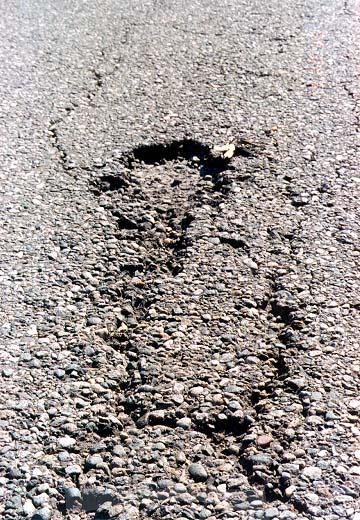When it comes to the paving process, we’re all trying to produce the highest quality pavements possible. During the process of paving many of us struggle with the issue of aggregate segregation. When it is present in our pavements, segregation accelerates pavement distress, resulting in reduced fatigue life, rutting, raveling and even moisture damage. It is possible to significantly diminish segregation by understanding what causes it and what processes can be utilized to avert problems in your aggregate mix.
There are two basic types of aggregate segregation:
- Coarse segregation: When discussing “segregation”, most people are actually referring to coarse segregation, as it is considered to be the most prevalent and damaging type of segregation. It occurs when gradation includes too much coarse aggregate and not enough fine aggregate. Coarse segregation is characterized by low asphalt content, low density, high air voids, rough surface texture, and accelerated rutting and fatigue failure.
- Fine segregation: Fine segregation occurs when gradation includes too much fine aggregate and not enough coarse aggregate. High asphalt content, low density, smooth surface texture, accelerated rutting, and better fatigue performance characterize fine segregation.
Aggregate segregation is typically caused by one of 5 main issues:
- Mix design: Open-graded mixes and low asphalt binder content mixes are particularly prone to segregation.
- Stockpiling: If aggregate is loaded on top of a conical stockpile then larger aggregate sizes are more likely to roll to the outside and bottom.
- Asphalt plants: Key portions of the plant generally concerned are:
- Cold feed bins. Bins may not feed uniformly.
- Batch plant hot bins. Dust may collect on the wall and discharge in large concentrated slugs.
- Drum mixers. Large particles will generally flow through a drum mixer more quickly than smaller particles.
- Surge and storage bins. Situations such as an off-set discharge chute, angled material flow from the discharge chute, and excessively large bin openings can lead to segregation.
- Truck loading and unloading: Loading trucks in one large dump may cause the larger aggregate sizes to roll to the outside and bottom. We recommend visiting the interactive tutorial on multiple drop loading on our blog, located here.
- The asphalt paver: Segregation occurs as a result of hopper operation, auger speed, and disruptions in paver movement.

